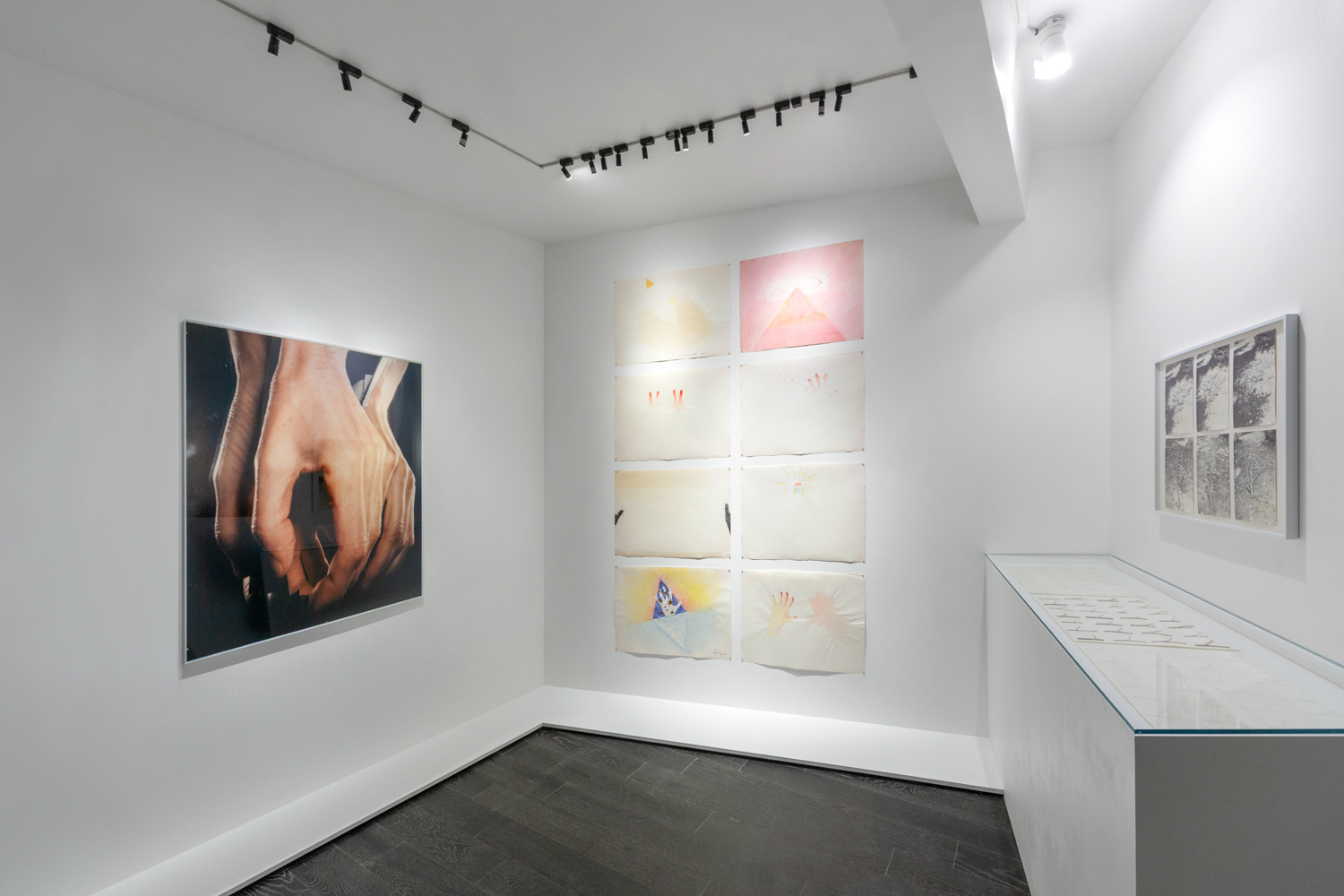
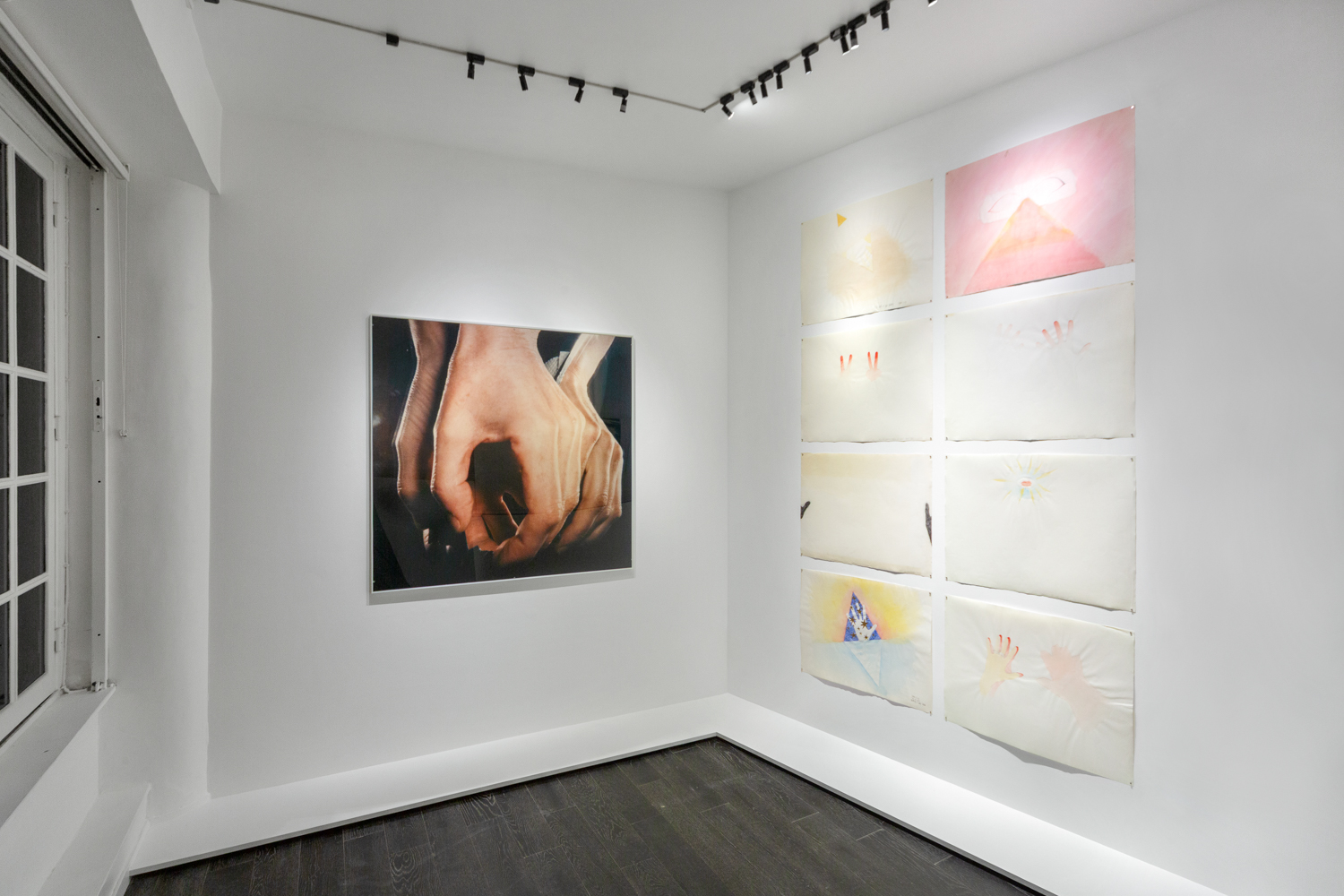
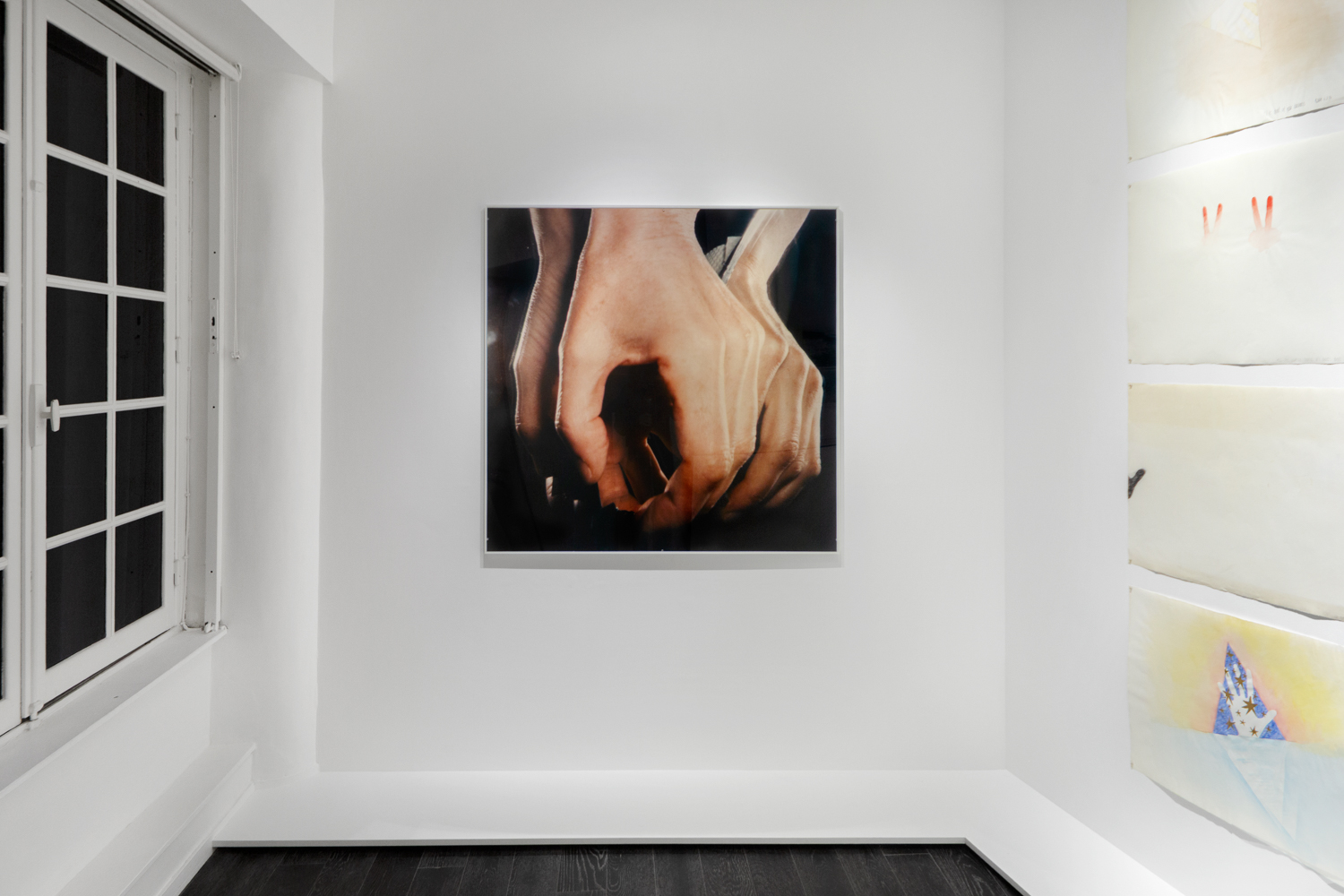
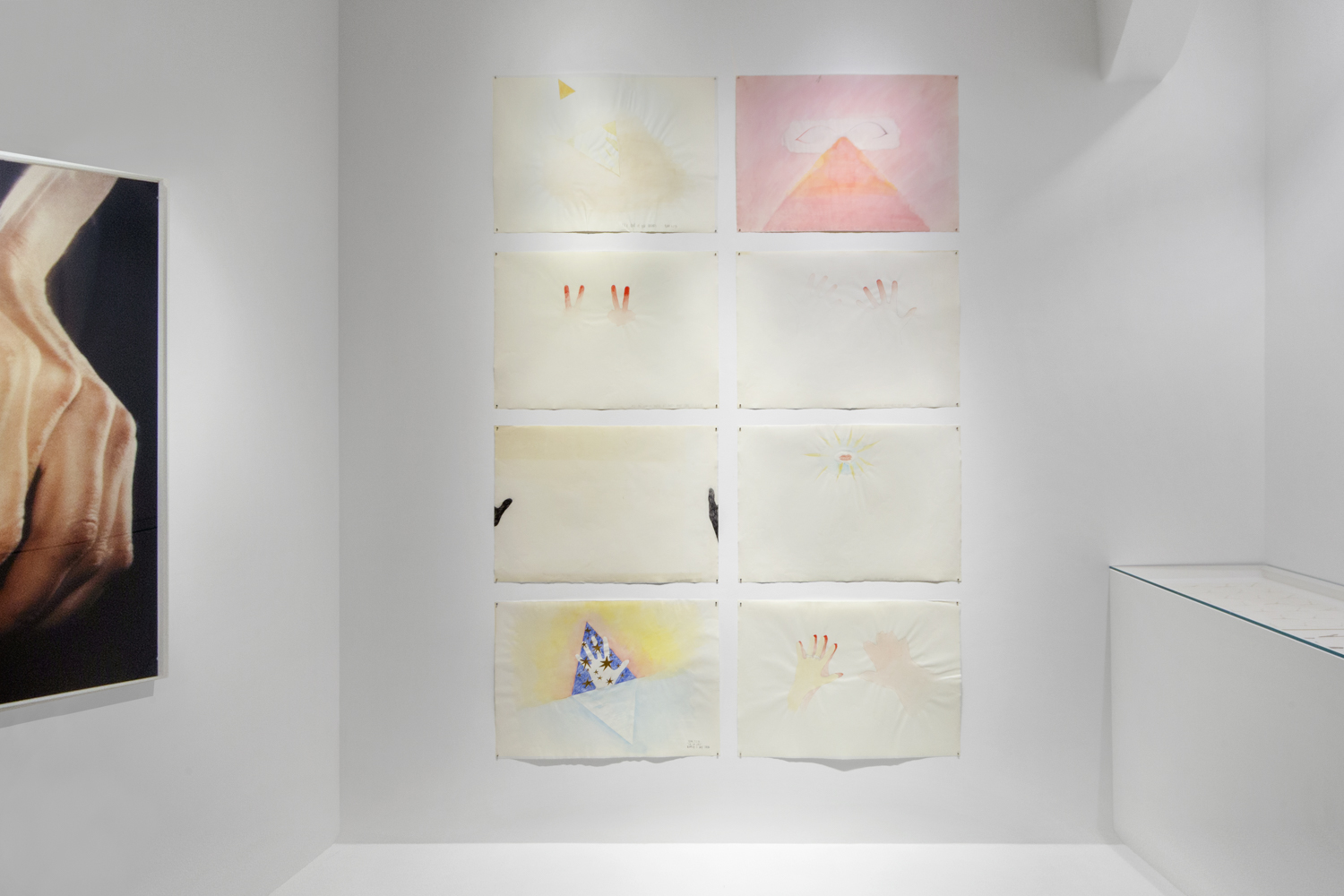
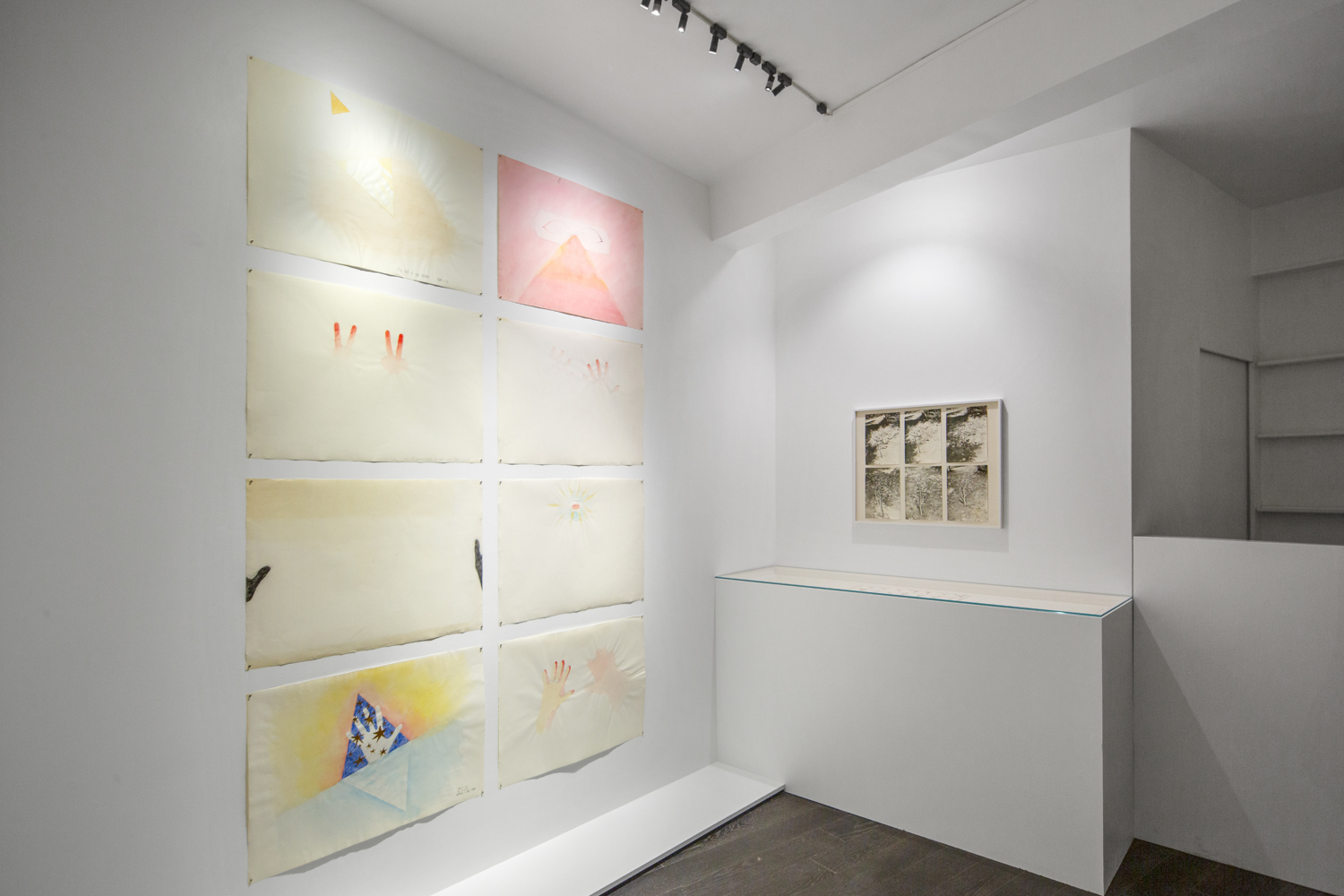
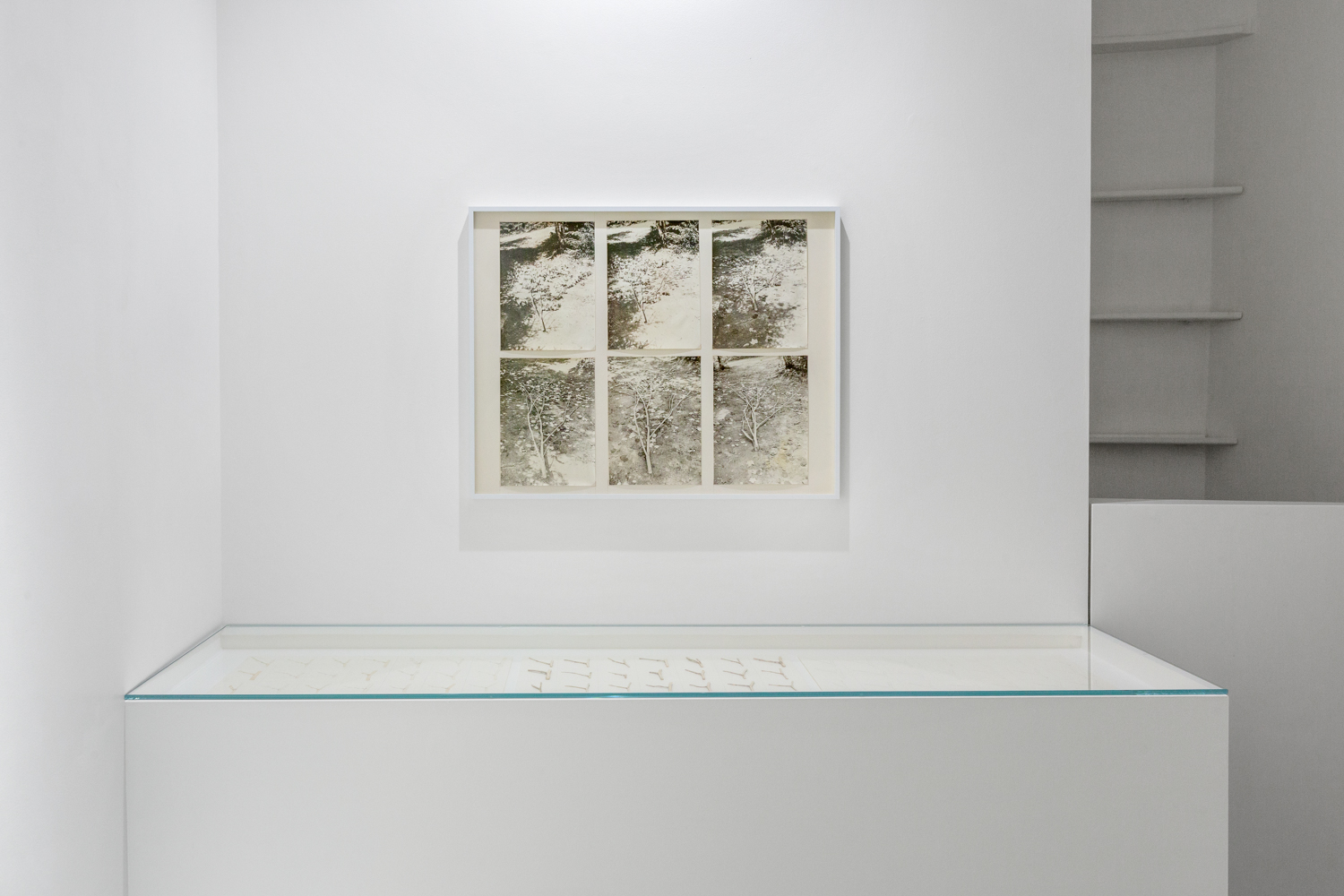
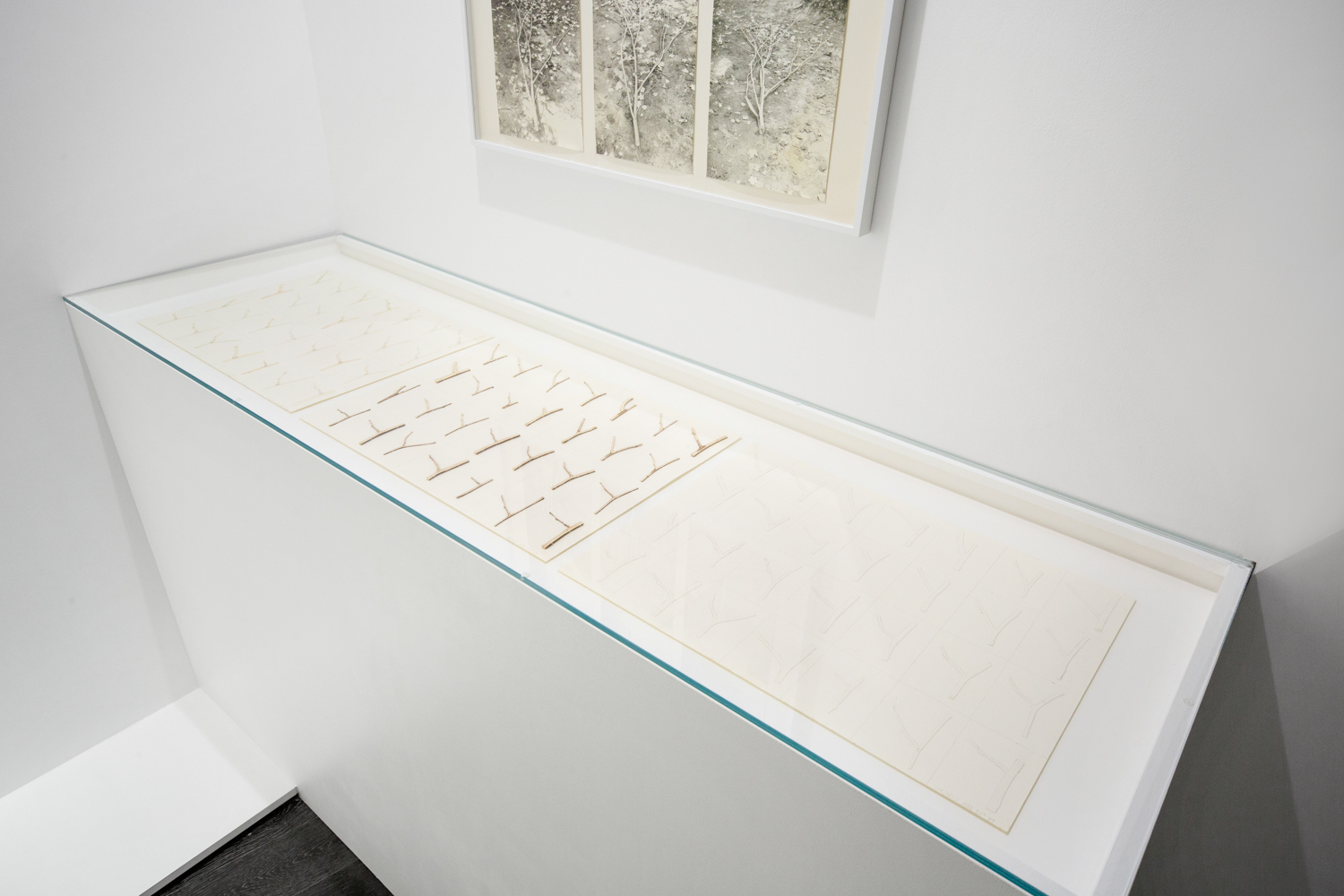
All the Lonely Things My Hands Have Done
Jean-Kenta Gauthier Odéon
5 rue de l'Ancienne-Comédie 75006 Paris
Opening: Saturday 18 Octobre, 4 — 8pm
Public conversation: Tuesday 21 October, 6pm at Jean-Kenta Gauthier Vaugirard [RSVP at info@jeankentagauthier.com]
Opening hours: Wednesday — Saturday, 2 — 7pm
All the Lonely Things My Hands Have Done is the first exhibition at the gallery devoted to the work of Swiss artist Hannah Villiger (1951, Cham, Switzerland – 1997, Auw, Switzerland), organized in collaboration with The Estate of Hannah Villiger. Titled after an early work presented in the exhibition, All the Lonely Things My Hands Have Done explores Hannah Villiger’s alphabet across the full scope of her multidisciplinary practice, following a reverse chronological path.
Defining herself as a sculptor working with photography, Hannah Villiger began in 1980 to use a Polaroid SX70 camera to map her own body and immediate surroundings, examining them through their sculptural qualities. She presented these investigations by enlarging her Polaroid films into large-format prints and wall compositions, which she programmatically titled Works, later Sculpturals and Blocks. On view in the exhibition, Sculptural (1988/1989) is a photographic enlargement of the artist’s left hand, doubly reflected in mirrors. The multiplication of the subject generates volume at the center of the image and hints at the mysterious interior space created by the hollow of the palm. Off-frame, the viewer imagines the artist’s posture and the position of her right hand holding the Polaroid camera. “The longest distance between the camera and any part of my body is between my raised arm and my toes,” wrote the artist in On My Book “Envy” (1986). Villiger photographed “by hand,” and the artisanal nature of her process lends her images “a singular sense of her own being,” in the words of art historian and curator Rainer Michael Mason.
Between 1974 and 1977, during an extended stay in Rome that included a residency at the Istituto Svizzero, Hannah Villiger produced a series of works on paper — watercolors and drawings in black and colored pencil — in which the physical presence of the body around the work is already manifest. The artist evokes the proximity between her hands and the surface of the paper, even leaving the imprint of her red lips. The titles, often inscribed at the bottom of the works in German, English, or Italian, evoke the intimate experience and radiance of the body. Die Aussenwelt der Innenwelt (The Outer World of the Inner World, 1975) suggests the internal space of the body and its zones of contact with the outside world. Likewise, in Untitled (Rome) (1975), the artist draws the outlines of her hands at the edges of the sheet, holding — or pressing — the paper: there is something vertiginous in approaching this work, whose format allows just enough space for one’s torso to be drawn into the void of the blank page.
Before Italy, Hannah Villiger worked in Canada, at the intersection of Land Art and Arte Povera, creating Baumhäutungen — literally “tree skinnings.” The vintage photographic series Untitled (1974), documenting an ephemeral work, presents the six stages of the process: the branch is first shown and stripped of its foliage, then of its bark, until the inner body escapes from its envelope. Another work from the same period is a triptych of twig ramifications (Untitled, Toronto, August 31, 1974), twenty-eight in total, whose outer appearance the artist carefully rendered in pencil and watercolor — reminiscent of botanical illustrations — before longitudinally cutting the plants, sewing them into the paper to reveal their inner layers, and finally returning to the external form, preserving only paper silhouettes pasted onto the sheet. An exploration into the image, the volume, and the form of twigs.
Hannah Villiger established herself as a major figure of the Swiss art scene before her career was cut short by her premature death at the age of forty-five. Her work has been the subject of numerous institutional exhibitions, including at Kunsthalle Basel (1985), Museum für Gegenwartskunst Basel (1989, now Kunstmuseum Basel | Gegenwart), the São Paulo Biennial (Swiss Pavilion, 1994, with Pipilotti Rist), MAMCO (Geneva, 2007), Kolumba (Cologne, 2020), Weserburg (Bremen, 2023), Muzeum Susch (Susch, 2023), and the Centre Pompidou (Paris, 2024). She lived in Paris from 1986 to 1997.
— Jean-Kenta Gauthier, October 2025